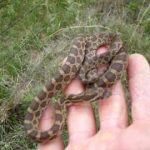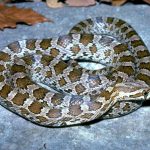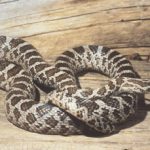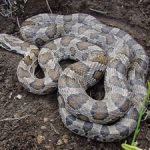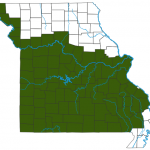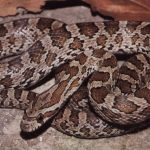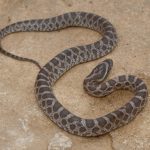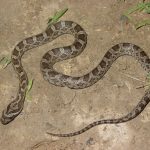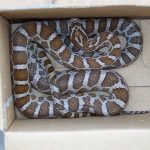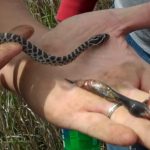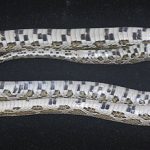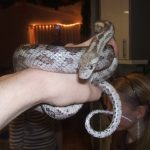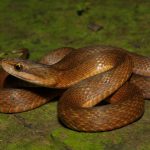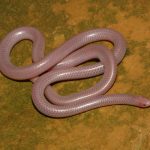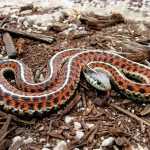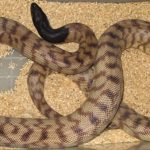Great Plains Rat Snake
Great plains rat snake is a type of non-venomous snake native to the central region of the United States. The species is mainly nocturnal and is known to be quite secretive. The snake exhibits both terrestrial and arboreal nature.
| Kingdom | Animalia |
| Phylum | Chordata |
| Subphylum | Vertebrata |
| Class | Reptilia |
| Order | Squamata |
| Suborder | Serpentes |
| Family | Colubridae |
| Subfamily | Colubrinae |
| Tribe | Lampropeltini |
| Genus | Pantherophis |
| Scientific Name | Pantherophis emoryi |
| Other Names | Brown Rat Snake, Chicken Snake, Emory’s Coluber, Emory’s Pilot Snake, Emory’s Racer, Emory’s Snake, Gray Rat Snake, Eastern Spotted Snake, Prairie Rat Snake, Mouse Snake, Spotted Mouse snake, Western Pilot Snake, Texas Rat Snake |
| Length | 3 to 5 ft |
| Color | Light gray or tan with brown, dark gray or green-gray irregular patches down the back; stripes on both sides of the head which joins to form a point between the eyes |
| Distribution | Missouri, Nebraska, Colorado, Texas (United States), northern Mexico |
| Habitat | Grassland, lightly forested habitats, coastal plains, semi-arid regions, rocky, moderately mountainous regions, farmland |
| Diet | Rodents, birds, other snakes, lizards, frogs |
| Hibernation Fact | Hibernate during winter below the ground or under rocks, slabs, crevices or anywhere below the frost or freeze line in the ground |
| Predators | Medium-sized mammals, raptors |
| Venom Fact | Non-venomous |
| Breeding Season | March-April |
| Mode of Reproduction | Oviparous(egg laying) |
| Clutch Size | 3 to 37 eggs |
| Reproductive Age | Male: 2 years of age Female: 3 years of age |
| Average Lifespan | More than 20 years |
| IUCN Conservation Status | Least Concern |
Great Plains Rat Snake Pictures Gallery
- Great Plains Rat Snake Baby
- Great Plains Rat Snake Images
- Great Plains Rat Snake Photos
- Great Plains Rat Snake Pictures
- Great Plains Rat Snake Range
- Great Plains Rat Snake
- Great Plains Rat Snakes
- Images of Great Plains Rat Snake
- Pictures of Great Plains Rat Snake
- Great Plains Rat Snake Juvenile
- Great Plains Rat Snake Belly
- Great Plains Rat Snake Care


